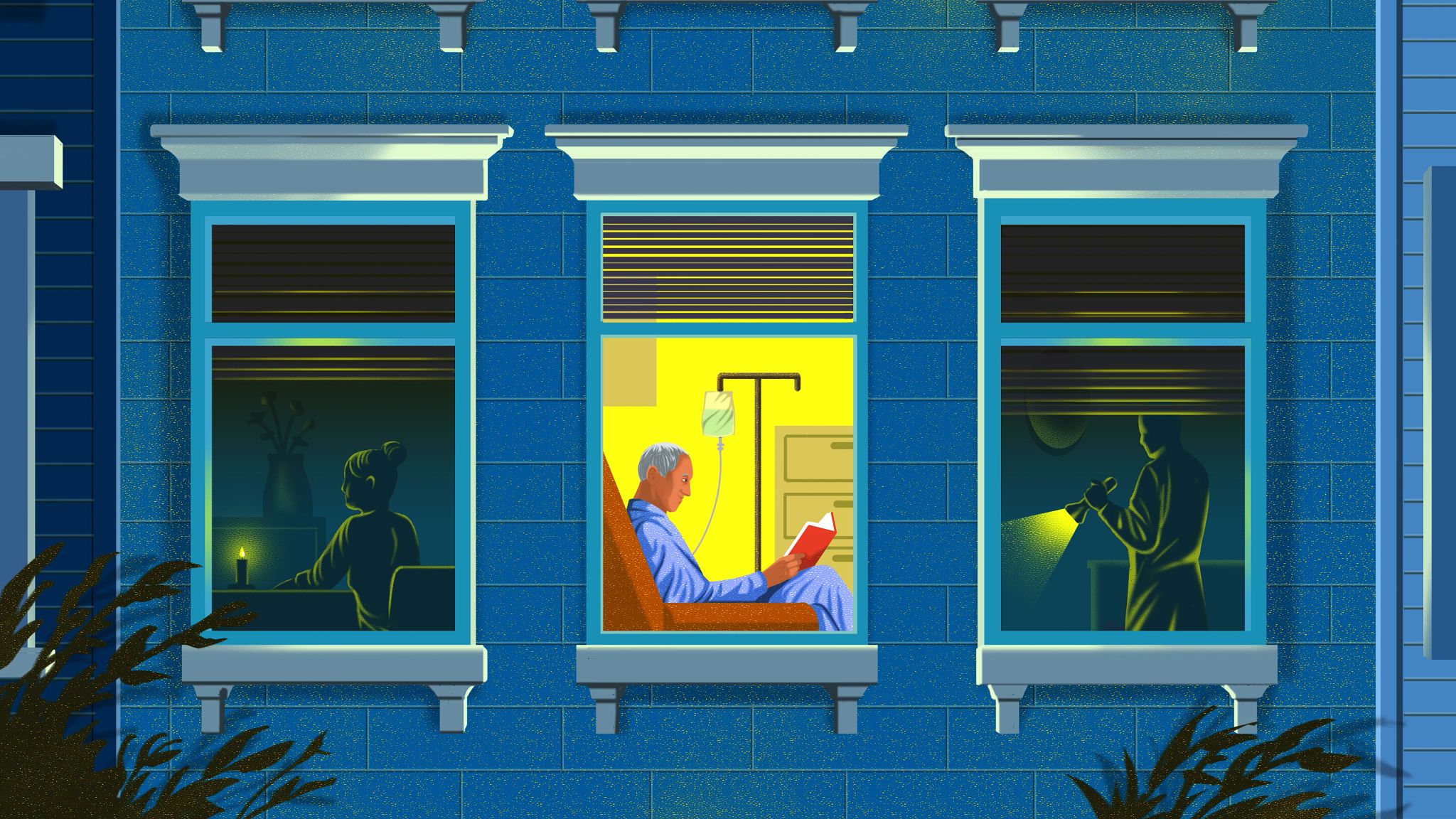Play all audios:
When Vandy Lewis hears from Austin Energy, she knows trouble may be ahead. It’s usually a weather alert about a potential outage that could leave her without electricity to power the oxygen
concentrator she needs at her home in Austin, Texas. Electricity also powers the CPAP machine she needs anytime she takes a nap or sleeps at night. “This is a lifetime thing. It’s chronic,”
Lewis, 75, says of her medical conditions, which include severe sleep apnea. “If I get up and move around, I need it because I get short of breath.” In 2014, Lewis signed up with the
Medically Vulnerable Registry offered by Austin Energy (AE), the nation’s third-largest municipally owned utility. Those registered get “personalized emergency backup plans” to help prepare
for outages and bill management to avoid service being cut off if payment has not been made. She must be recertified every five years. CREATING AWARENESS OF PROGRAMS People like Lewis, who
rely on home medical devices, are at the mercy of their electric companies. That’s why utilities nationwide have created various programs with differing requirements to help their most
vulnerable customers. With no national regulatory body that tracks electric company customer service programs, those that have developed special services for the medically vulnerable vary
tremendously. At Tampa Electric (known as TECO, which serves 860,000 electric customers in West Central Florida, those participating in its Medical Watch program identify themselves for
special alerts to planned outages. TECO’s program began 40 years ago and requires a physician’s certification of the need for electrically powered life-sustaining equipment. Florida Power
& Light’s (FPL) Medically Essential Service notifies electrically dependent customers before and after hurricanes. The Oakland-based Pacific Gas & Electric (known as PG&E) serves
5.4 million electric customers in northern and central California and counts 244,000 residential participants for its Medical Baseline program that began in 1984. It provides an additional
monthly allotment of power or a discount based on rates and offers additional alerts about outages and additional attempts to reach medically vulnerable customers. JOIN OUR FIGHT FOR
CAREGIVERS Sign up to become part of AARP's online advocacy network and help family caregivers get the support they need. But ensuring those customers or their family caregivers are
aware of these offerings isn’t so easy. Despite bill inserts, website details and working with medical providers and social service agencies to notify patients and customers about the extra
attention they can receive (texts, emails, robocalls, personal calls and even in-house visits), Austin Energy has just 555 individuals registered for its program. The community-owned
electric utility’s goal is to enroll between 700 and 800 by the end of the current fiscal year, says Kerry Overton, Austin Energy deputy general manager. Qualifying medical devices depends
on each utility’s criteria, but they can include ventilators, kidney dialysis equipment, and infant apnea monitors. Recent research finds that more frequent and more severe weather means the
threat of high winds and heavy rain, winter storms, hurricanes, wildfires and floods can leave individuals with disabilities and their caregivers at an increased risk of losing electricity.
Those with medical devices and their caregivers may want to learn proactively what their local electric provider offers to keep the power flowing. And while these companies can’t restore
power first to vulnerable customers (restoration depends on what caused the outage, how many people are involved), they can remind them to charge up all medical equipment and “encourage
customers who depend on life-sustaining medical devices to consider sitting a storm out at a storm shelter” or another safe location, says Karen McAllister, a public information officer for
JEA, Jacksonville’s municipally owned utility. INCREASES IN SEVERE WEATHER Power outages from severe weather across the U.S. have doubled from about 50 in the early 2000s to more than 100
annually over the past five years, according to a 2022 analysis of government data by the Associated Press.

